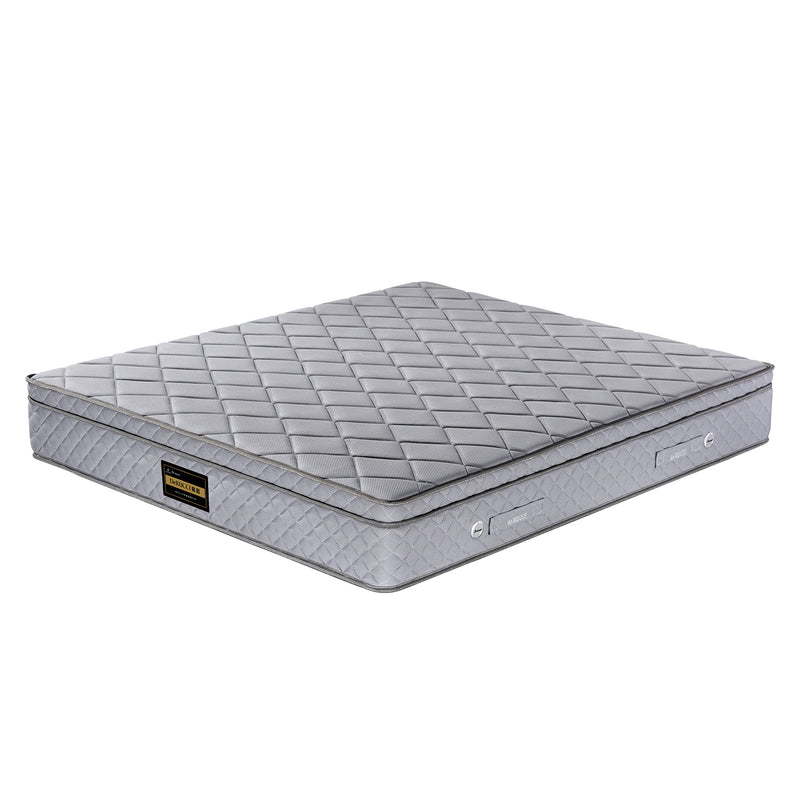Unlock the Secret to Sleep: Discover the Allure of Hypoallergenic Mattresses!
In an age where health and well-being are more important than ever, the quest for a good night's sleep has led many to explore the world of hypoallergenic mattresses. These specialised sleeping surfaces are designed to minimise allergens, providing a sanctuary for those who suffer from allergies or asthma. Sleep quality plays a crucial role in our overall health, influencing everything from mood to immune function. In this article, we will delve into the fascinating realm of hypoallergenic mattresses, uncovering what they are, the myriad benefits they offer, and how they stack up against traditional mattresses. By the end, you'll have a comprehensive understanding of why investing in a hypoallergenic mattress could be a game-changer for your sleep and health.

What are Hypoallergenic Mattresses?
Hypoallergenic mattresses are specifically engineered to reduce the accumulation of allergens like dust mites, mould, and pet dander. These mattresses are typically made from materials that are less likely to harbour allergens, such as natural latex, organic cotton, or wool. Natural fibres are not only breathable but also inherently resistant to moisture, which helps prevent the growth of mould and mildew. Additionally, many hypoallergenic mattresses come with special treatments or covers that provide an extra layer of protection against allergens. The types of hypoallergenic mattresses available vary widely, from memory foam options infused with cooling gels to latex mattresses that offer both comfort and durability. This diverse range ensures that there is a hypoallergenic solution to suit various sleeping styles and preferences.
Benefits of Hypoallergenic Mattresses
The benefits of hypoallergenic mattresses extend far beyond just reducing allergy symptoms. For individuals with asthma or sensitive skin, these mattresses can provide significant relief by creating a healthier sleeping environment. A friend of mine, who has struggled with allergies for years, recently made the switch to a hypoallergenic mattress and reported a marked improvement in her sleep quality. She no longer wakes up congested or itchy, allowing her to enjoy her mornings without the dreaded allergy fog. Beyond allergy relief, hypoallergenic mattresses often promote better sleep quality overall. Many are designed to offer optimal support and comfort, which can result in deeper, more restorative sleep. Additionally, the materials used in hypoallergenic mattresses are often more durable, which may lead to better long-term health outcomes as they do not break down as quickly as traditional mattresses.
How Hypoallergenic Mattresses Differ from Regular Mattresses
When comparing hypoallergenic mattresses to regular mattresses, several key differences come into play. Traditional mattresses are often made with synthetic materials that can trap allergens and dust, leading to a less than ideal sleeping environment. In contrast, hypoallergenic mattresses utilise materials that resist allergens and promote breathability. Furthermore, while regular mattresses may require more frequent cleaning and maintenance due to the buildup of dust and allergens, hypoallergenic options are typically easier to care for. Another important consideration is durability; hypoallergenic mattresses tend to last longer, which can make them a more cost-effective investment in the long run. While the initial cost may be higher than that of a standard mattress, the potential for improved health outcomes and fewer allergy-related issues can outweigh the short-term savings of opting for a traditional mattress.
Choosing the Right Hypoallergenic Mattress
Selecting the right hypoallergenic mattress can feel overwhelming, but there are several key factors to consider that can simplify the process. First, look for certifications that indicate the mattress meets specific safety and hypoallergenic standards. Understanding the materials used in the mattress is also crucial; natural and organic options are often the best choices. Personal comfort preferences should not be overlooked, so it's essential to test out different types of mattresses to find the one that feels best for you. Lastly, ensure that the mattress comes with a good warranty and a favourable return policy, as this will provide peace of mind in case the mattress does not meet your expectations.
Key Takeaways on Hypoallergenic Mattresses
In summary, hypoallergenic mattresses represent a vital investment for those seeking better health and improved sleep quality. By understanding what these mattresses are and the unique benefits they offer, individuals can make informed decisions that enhance their well-being. Whether you suffer from allergies, asthma, or simply wish to create a healthier sleeping environment, a hypoallergenic mattress could be the solution you've been looking for. Don't underestimate the power of a good night's sleep—consider making the switch to a hypoallergenic mattress today for a brighter, healthier tomorrow.







